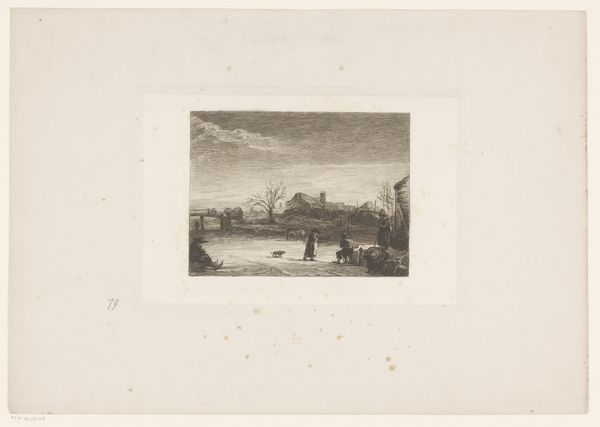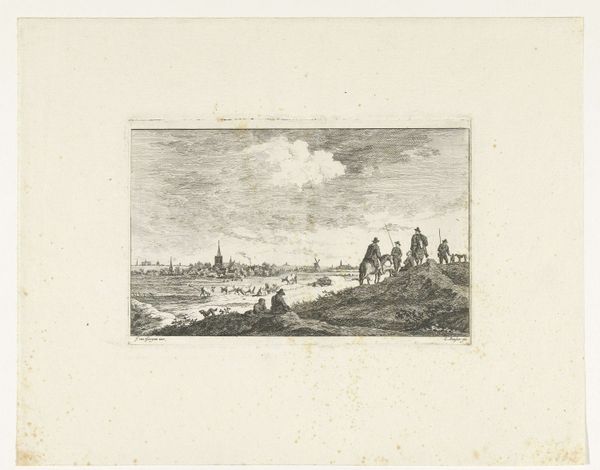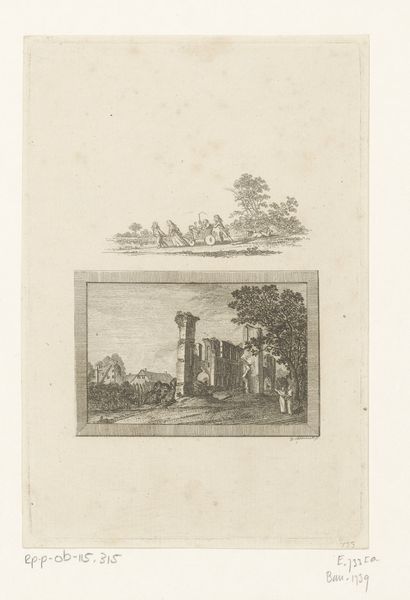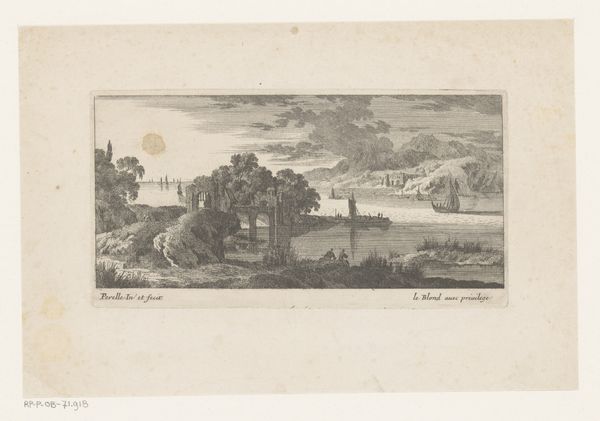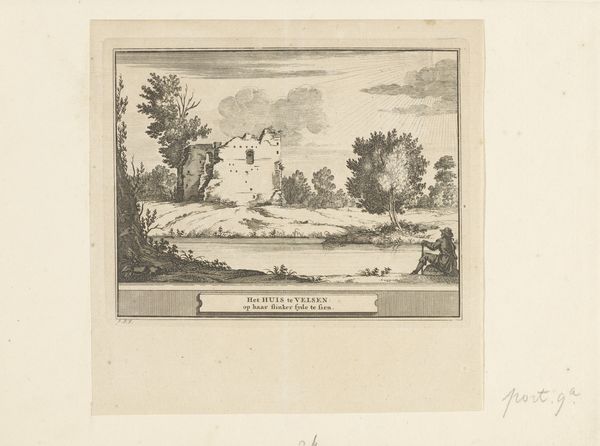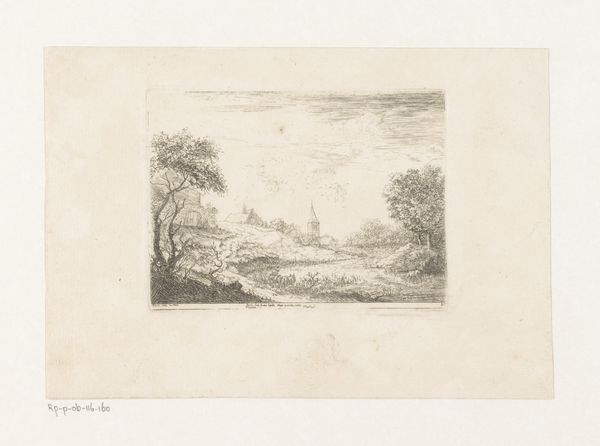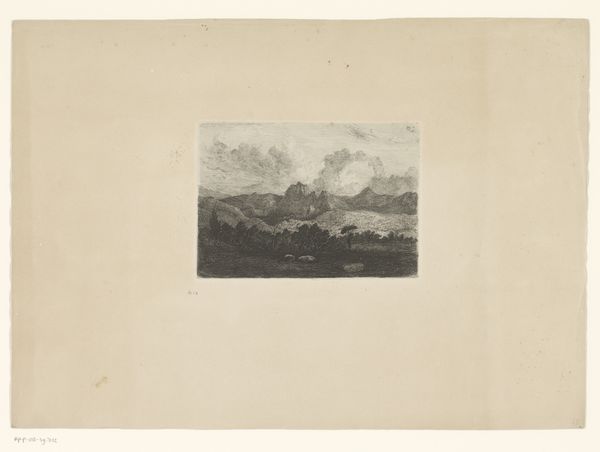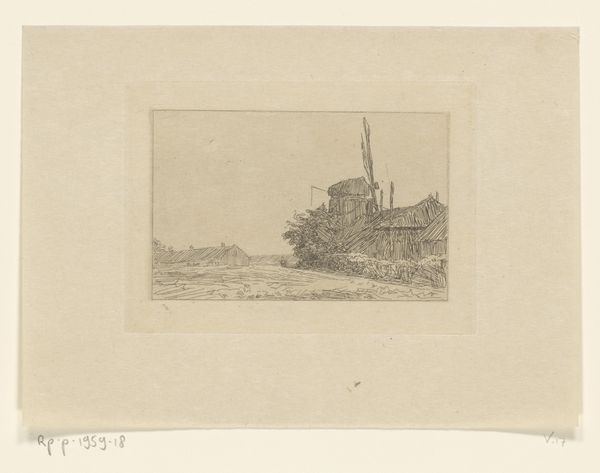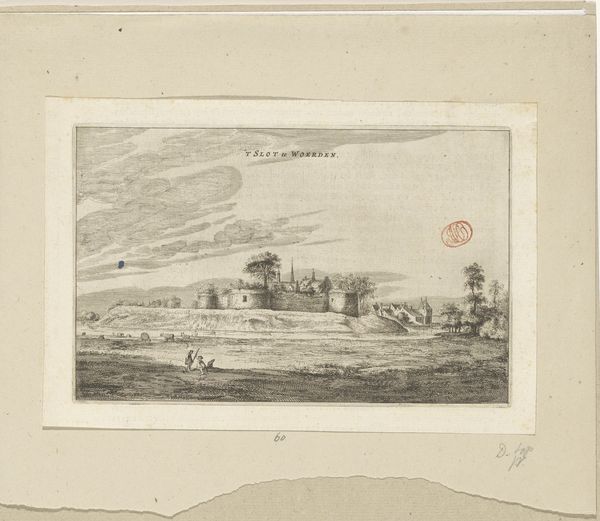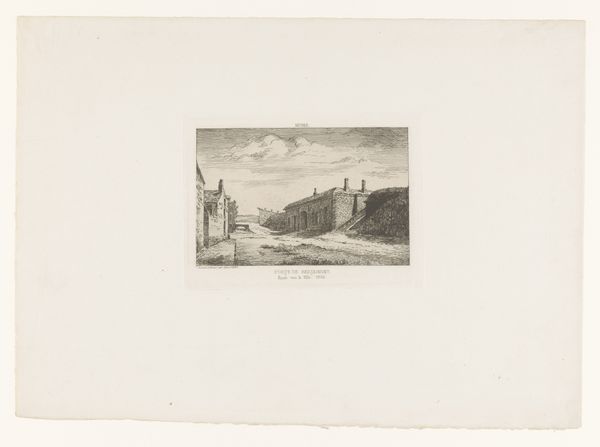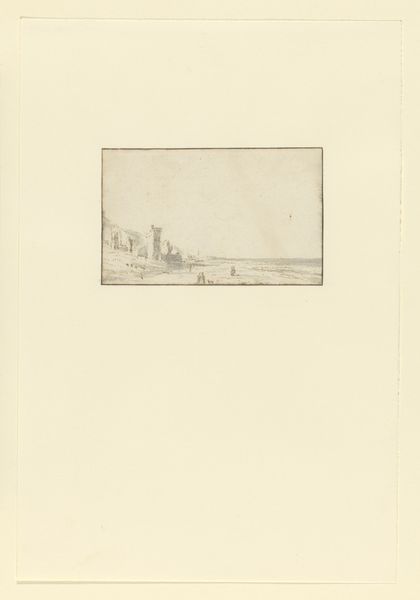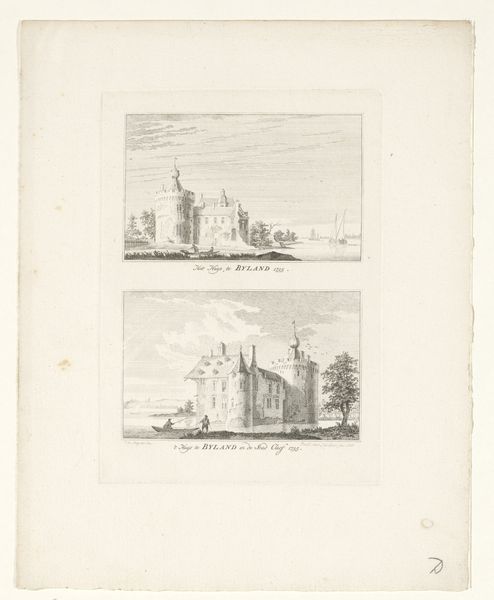
Twee gezichten op het wachthuis De Nolle en op Vlissingen, 1743 1754 - 1792
0:00
0:00
print, engraving
#
aged paper
#
dutch-golden-age
# print
#
old engraving style
#
landscape
#
cityscape
#
engraving
Dimensions: height 159 mm, width 103 mm
Copyright: Rijks Museum: Open Domain
Editor: We’re looking at "Twee gezichten op het wachthuis De Nolle en op Vlissingen, 1743" by Hendrik Spilman, created sometime between 1754 and 1792. It’s an engraving, housed in the Rijksmuseum. The stark lines of the print give it a rather serious, almost documentary feel. I’m curious, what does this work say about its time? Curator: That’s a perceptive observation. This print offers a valuable insight into the 18th-century Dutch Republic, particularly regarding its coastal defenses and civic identity. Consider how the strategic positioning of the guardhouse, 'De Nolle', emphasizes vigilance against maritime threats. How do you think the print might have functioned in the public imagination at the time? Editor: It feels like it’s intended to inspire a sense of security and perhaps civic pride, demonstrating the watchfulness of the city. Was there a particular social or political context influencing its creation? Curator: Absolutely. The Dutch Golden Age was fading, but maritime trade remained crucial. This image, probably commissioned or sold as a print, would circulate among different social classes, reinforcing ideas of national identity intertwined with the sea. Its artistic merit also highlights the growth of Dutch art and its role in shaping socio-political attitudes. The medium, engraving, also democratized image circulation, unlike painted artworks only available to the upper classes. Editor: So it served almost as propaganda, reminding people of their collective defense responsibilities? Curator: It’s subtler than outright propaganda, think of it as instilling a sense of shared purpose through a widely accessible visual medium. Does analyzing its societal function alter how you initially perceived the image? Editor: Yes, knowing that it played a part in shaping civic consciousness really enriches my understanding. I’ll never look at an old landscape print the same way! Curator: Exactly! Appreciating the sociopolitical role transforms a mere image into a historical narrative.
Comments
No comments
Be the first to comment and join the conversation on the ultimate creative platform.
